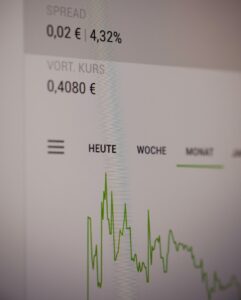The Impact of Market Structure on Risk Management in Forex Trading
Forex trading, also known as foreign exchange trading, involves buying and selling currencies in the global financial market. With an average daily turnover of over $5 trillion, forex trading offers immense opportunities for profit. However, it also carries significant risks. One of the key factors that affect risk management in forex trading is market structure.
Market structure refers to the organization and behavior of participants in a market. In the forex market, the structure is decentralized, meaning that there is no central exchange or governing body. Instead, trading is conducted electronically over-the-counter (OTC), with transactions taking place between participants directly or through electronic trading platforms.
The decentralized nature of the forex market has several implications for risk management. Firstly, it leads to high liquidity, as participants can enter and exit positions quickly and easily. This liquidity is crucial for risk management, as it allows traders to execute trades at desired prices and minimize slippage.
However, the decentralized structure also means that the forex market is highly fragmented. Unlike the stock market, where trading is concentrated on a few major exchanges, forex trading takes place across multiple venues worldwide. As a result, there can be differences in prices and execution speeds between different brokers and platforms. This fragmentation introduces additional risks for traders.
One risk associated with market fragmentation is the possibility of price discrepancies. Since there is no central exchange, the prices of currency pairs can vary slightly between different brokers. This phenomenon, known as “slippage,” can lead to unexpected losses or reduced profits. Traders need to be aware of these price discrepancies and choose reliable brokers or trading platforms that offer competitive spreads and reliable execution.
Another risk introduced by market fragmentation is the potential for information asymmetry. In a centralized market, all participants have access to the same information, as trades are executed on a single exchange. In the decentralized forex market, however, there can be differences in the availability and speed of information between participants. This can create opportunities for market manipulation or unfair advantages for certain traders. To mitigate this risk, traders should stay informed about market news and developments and choose reputable brokers that provide transparent and timely information.
In addition to market structure, risk management in forex trading is also influenced by other factors, such as leverage and position sizing. Leverage allows traders to control larger positions with a smaller amount of capital. While leverage can amplify profits, it also increases the potential for losses. Therefore, it is essential for traders to use leverage judiciously and set appropriate stop-loss orders to limit potential losses.
Position sizing is another critical aspect of risk management. Traders need to determine the appropriate size of their positions based on their risk tolerance and trading strategy. A common rule of thumb is to risk no more than 1-2% of the trading capital on any single trade. This helps to limit potential losses and preserve capital in case of adverse market movements.
Furthermore, risk management in forex trading requires the use of risk management tools, such as stop-loss orders and take-profit orders. Stop-loss orders automatically close a trade when the market moves against the trader, limiting potential losses. Take-profit orders, on the other hand, close a trade when the market reaches a specified profit target, allowing traders to lock in profits. These tools help traders to implement disciplined risk management strategies and avoid emotional decision-making.
In conclusion, market structure plays a crucial role in risk management in forex trading. The decentralized nature of the forex market provides liquidity but also introduces risks such as price discrepancies and information asymmetry. Traders need to be aware of these risks and choose reliable brokers and platforms that offer competitive spreads, reliable execution, and transparent information. In addition to market structure, risk management in forex trading also involves factors such as leverage, position sizing, and the use of risk management tools. By implementing sound risk management strategies, traders can minimize potential losses and maximize profits in the dynamic and volatile forex market.





